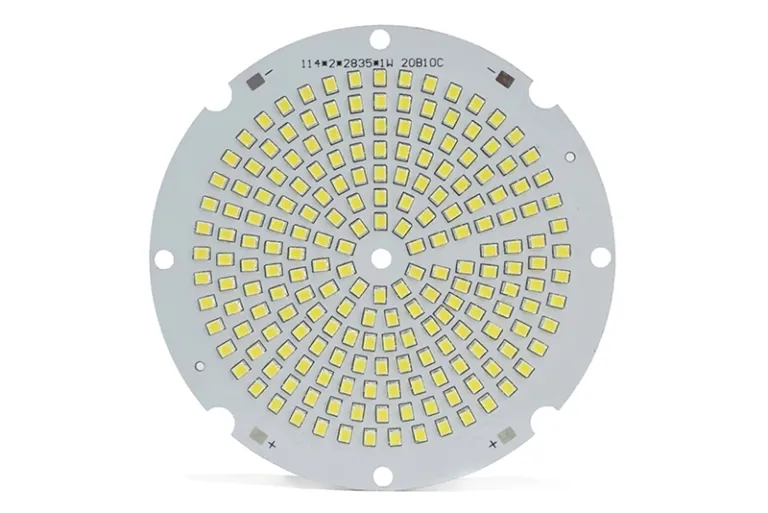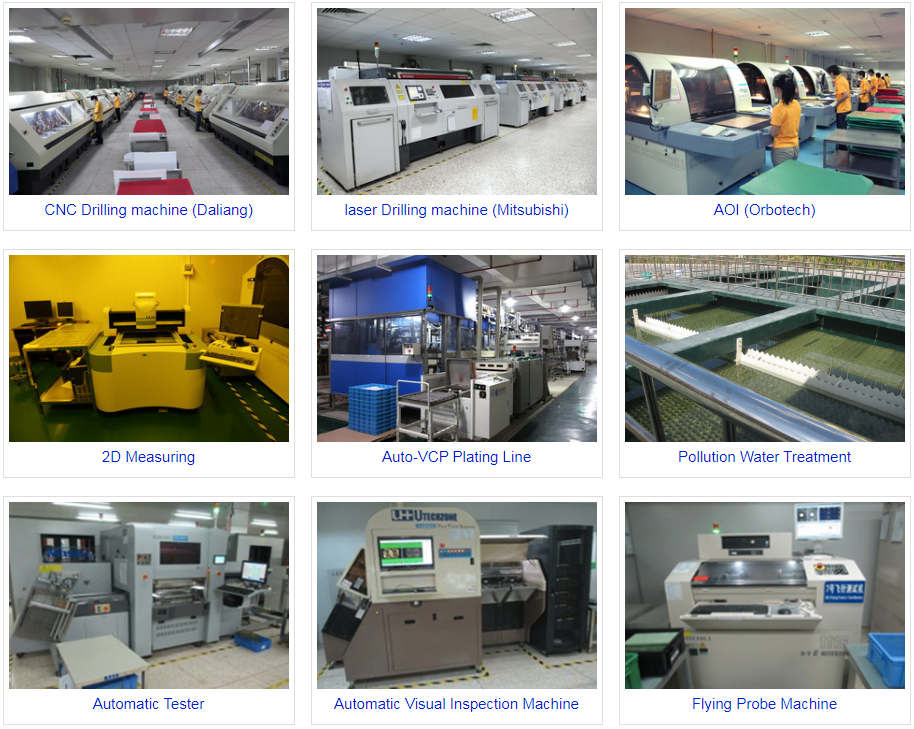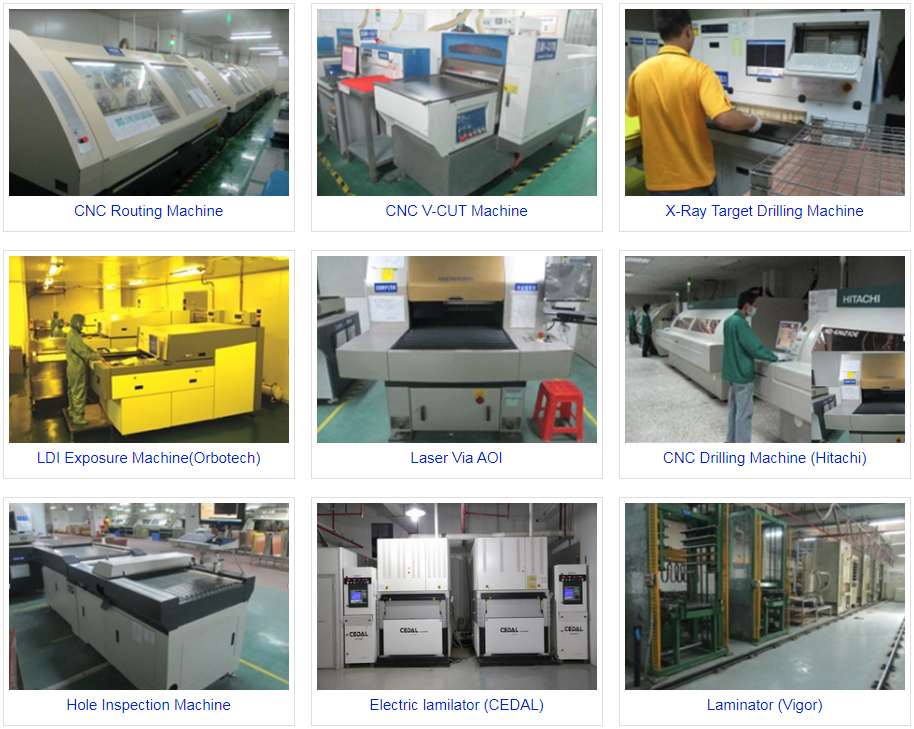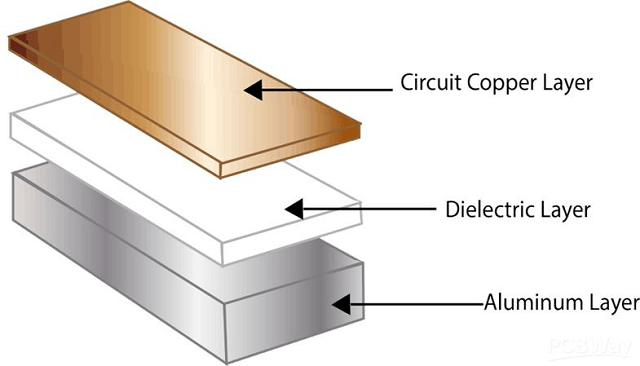When choosing an Aluminium Core PCB (Printed Circuit Board) manufacturer, making informed decisions is crucial, as it directly impacts the success of your electronic product. In this process, here are some key steps to help you select the most suitable manufacturer to meet your needs and standards.
By thoroughly defining your PCB requirements, you will have a solid foundation for selecting the right manufacturer who can meet these specifications effectively.
By following these steps, you can create a list of potential manufacturers and gather valuable information to further evaluate their suitability for your project. This initial research will help you identify candidates who are better equipped to meet your Aluminium Core PCB needs.
With good thermal conductivity, electrical insulation performance and machinability, the Aluminium Core PCB has the same thickness and the same line width compared with the conventional FR-4. Also, it can carry higher current and can withstand voltage 4500V, thermal conductivity greater than 2.0, mainly based on Aluminium Core PCB in the industry
Aluminium Core PCB plates are commonly used for aluminum substrates, mainly including 1000 series, 5000 series and 6000 series.
Aluminum PCB prototyping solder mask color: white, black, we can provide super white color for Led PCB to improve the Led lumen.
Frequently Asked Questions (FAQ) About Our Aluminum Boards Process and Capabilities
Here you will find many quick questions and answers about Aluminum PCBs,don’t hesitate to contact us,our email is service@pcbsky.com
What Is Aluminum PCB?
Aluminum PCBs are printed Circuit Boards which contain a thin layer of conductive dielectric material. They are also known as Aluminum Clad, Aluminum base, MCPCB (Metal Clad Printed Circuit Board), IMS (Insulated Metal Substrate), Thermally Conductive PCBs etc.
Why Is Aluminium Used In Circuit Boards?
Higher durability: Aluminum provides strength and durability to a product that ceramic or fiberglass bases cannot. Aluminum is a sturdy base material that can reduce accidental breakage during manufacturing, handling, and everyday use.
A Metal Core Printed Circuit Board (MCPCB) is a type of printed circuit board that contains a base metal material. In contrast to FR4 and CEM3 printed circuit boards, a Metal Core Printed Circuit Board uses a base metal to increase the thermal conductivity of the PCB.
What Is Metal Core PCB?
A Metal Core Printed Circuit Board (MCPCB), also known as a thermal PCB or metal backed PCB, is a type of PCB that has a metal material as its base for the heat spreader portion of the board.Base metals in the MCPCB are used as an alternative to FR4 or CEM3 boards.
What Materials Are Made Of Aluminum PCB Board?
The most materials of Aluminum PCB are Aluminum substrate and copper clad.
What Is The Standard Delivery Time For Aluminum Boards?
We can produce the prototype of Aluminum PCB boards with quick turn 48h and one week for standard leading time,2-3 weeks for mass production of Aluminum PCBs.
What Color Is For The Soldermask And Is There Other Colors Available?
The standard color of Aluminum is white. We can also provide soldermask in red, white,blue or black,also matte green,matter black,matter red or matter blue for an additional amount.
What Is The Maximum Size Aluminum PCB You Can Produce?
The largest size PCB we can produce is 47″ x 15″ or 1200mm x 400mm.
Can You Produce 2layer Aluminum PCB?
Yes,we can produce 2layer Aluminum PCB board.
Why Is Aluminium Used In Circuit Boards?
Higher durability: Aluminum provides strength and durability to a product that ceramic or fiberglass bases cannot. Aluminum is a sturdy base material that can reduce accidental breakage during manufacturing, handling, and everyday use.
Printed circuit boards on an Aluminum Base
Aluminum PCBs are an excellent alternative to standard PCBs when high heat dissipation is required, such as in LED luminaires. Also, boards on an aluminum base are used if the board is required to withstand strong mechanical loads and vibrations.
The high thermal conductivity provided by the aluminum base of the board allows good heat dissipation from elements such as high-power transistors or high-power ultra-bright LEDs used in LED strips and lamps.This allows you to increase the life and reduce the probability of finished product failure.At the moment, the market for LED-based lighting technology is developing at a rapid pace, and, accordingly, the demand for aluminum-based boards is growing rapidly.
Printed circuit boards on an aluminum base – used when it is necessary to remove heat and dissipate in the future. The construction of metal-based boards is very similar to conventional single-sided boards. However, the main indicator is the thermal conductivity of the material, aluminum is a very good and cheap material, which facilitates its use for removing heat from various elements that generate heat.
Aluminum base PCBs – Mainly used in lighting equipment. Since super-bright LEDs generate a lot of heat, it is necessary to dissipate it as quickly as possible in order to increase their service life and prevent overheating. There are also technologies that allow you to solder directly onto an aluminum substrate bypassing the dielectric layer.
Why are Printed Circuit Boards Made of Aluminum?
Aluminum in PCBs is used when good cooling of the device is required or to transfer heat from the components on the board to the aluminum substrate and further to the fan or more powerful heat sink. The rigidity of the structure complements the aluminum boards.
Many people think that soldering to aluminum boards is quite problematic; they come up with various nonsense about aluminum fluxes. These people just don’t understand how an aluminum PCB works.
That is, the aluminum printed circuit board on top is exactly the same as a conventional printed circuit board and the soldering of such a board occurs in the same way in furnaces with reflow profiles of lead or lead-free solder pastes. The soldering temperature depends on which paste will be applied to the board and the slightly slow speed of the oven conveyor.
It is almost impossible to heat and solder such a board manually with a hairdryer or a soldering iron, because all the heat will be instantly dissipated in aluminum. And even if you add the temperature to 500 degrees, the conductors on the board are unlikely to withstand such a heat overload.
This is the point of these boards. If powerful LEDs are soldered to them for lighting, then a large amount of heat is released, which dissipates aluminum and then this heat is transferred either to the device case or to an additional radiator. This is to extend the life of the lamps and prevent them from overheating.
Aluminum boards aren’t just used for lamps. They are used in cases where the components on the board generate a lot of heat and to prevent component failure, boards with an aluminum substrate are used.
Why Switched to Aluminum LED Boards?
New Base for LED Electronics – The aluminum LED board emerged from the need to remove a lot of heat from the LEDs.
For decades, printed circuit boards were made of fiberglass or getinax, on which a layer of metal – thin copper – was glued. Gaps between the printed conductors were etched from the layer – a printed circuit board was obtained.
The previously existing methods of heat removal from LEDs were either ineffective or technically difficult. A thin printed circuit board, for example, a powerful LED strip, was glued onto a metal substrate – a plate, strip or profile, and the heat from the LEDs went through a layer of adhesive tape, glue and heat-conducting metal and was dissipated in the environment. To increase the heat removal, fans were installed, which created noise and reduced the reliability of the device. High efficiency heat pipes were sometimes used.
How did Aluminum Boards Come About?
If an aluminum plate is anodized, i.e., a coating of aluminum oxide, which is a dielectric, is applied to the metal surface, then an extraordinary opportunity appears on the dielectric layer to place the conductive paths of the printed circuit board. This is how an aluminum analog of a printed circuit board appeared, and then one-, double-sided and even multilayer aluminum printed circuit boards with plated vias or conductive pistons.
Printed circuit boards on sheet copper are also made, but they are more expensive.
The metal layer inside the board provides good heat dissipation from the LEDs and increases the solidity of the board, especially the multilayer one.
Soldering of LEDs to an aluminum board as well as SMD-LEDs can be automated, you can solder manually.
The transition to metal boards increased the power of LED products, reliability, service life, vibration and shock resistance, and reduced dimensions.
The base of any printed circuit board is usually a dielectric or a metal base covered with a dielectric. Anodized aluminum is used as a dielectric, but sometimes copper is also used. Copper has excellent thermal conduction properties, but aluminum is the most common material for metal-base PCBs.
Aluminum PCB is Optimal in Terms of Cost and Thermal Conductivity.
The simplest and most cost effective type of printed circuit board is a single sided printed circuit board with an aluminum base. A board of this type is no different from an ordinary single-layer one, only glued onto an aluminum plate. The generated heat passes through the dielectric and dissipates through the aluminum.
Recently, multilayer printed circuit boards with an aluminum base inside have been very popular. Aluminum, as elsewhere, is used as a heat sink.
We offer a wide range of printed circuit boards of various types, including flexibly rigid printed circuit boards.
With the increase in the degree of integration of the element base and the density of the placement of components on printed circuit boards, accounting for thermal processes is becoming increasingly important. The heat dissipation problem is solved by various methods. One of the main ones is the use of boards with a heat-conducting base.
Printed circuit boards with a thermally conductive base (metal base) are most often used when it is intended to use components that generate significant thermal power ( for example , high -brightness LEDs , laser emitters, etc.). The basic design of such a board includes a layer of conductors, a metal base, and a dielectric layer between them. The main properties of such a board are excellent heat dissipation and increased dielectric strength when exposed to high voltages.
Metal Based PCBs have Many Advantages over Conventional PCBs:
Dissipate heat without using additional radiators, special heat-conducting pastes.
Reduce / eliminate the need for forced air cooling fans.
Add mechanical rigidity to the product.
They increase the degree of integration of elements of high-power equipment operating with high currents and voltages at high operating temperatures.
Reduces the effect of heat stress on all components, thereby increasing the lifespan of the elements and the durability of the product.
The cooling properties of such boardsmake it much easier to organize heat removal, which favorably affects the cost of products.
Due to any configuration of the circuit boards,they can significantly save space in the device.
The boards have excellent EMC and shielding characteristics.
The use of such cardsimproves the reliability of the devices.
If you have any concerns regarding our material selection methodology or if you have any queries regarding specific materials, please feel free to Contact Us at any time.
Our sales team will be more than happy to assist you as well as provide you with information on pricing and/or lead-time regarding any material. Our FAE and engineering team will be more than happy to work with you on creating stack-ups and performing impedance calculations.




